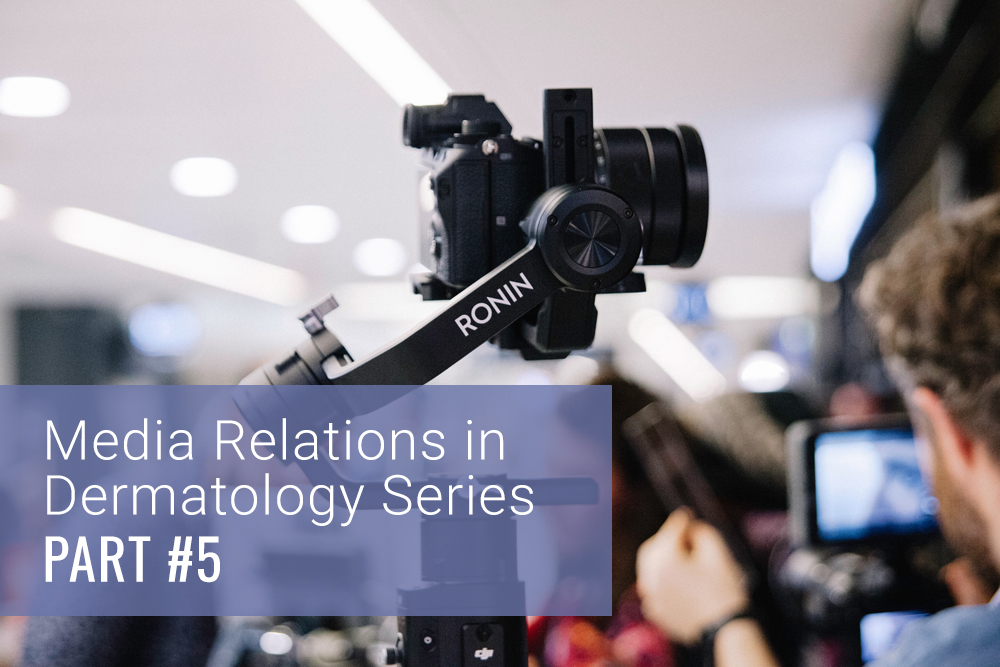Speaking with the media can give even the most confident dermatologist anxiety, but there is no need to fear. Relax and remember these seven tips for successful interviews.
1. Let the Reporter Lead and Don’t Be Pushy
Remember – this is not your story. This is the reporter’s story. As a source, you are a vital part of the story, but you are not the one calling the shots. Whatever you do, do not be pushy or else you will never be interviewed again.
2. Be Comfortable With the Pregnant Pause
With both print and broadcast interviews, reporters often pause before asking the next question. In most cases, reporters are trying to write or type your responses. Chances are, if you try to fill that gap with words, you will ramble and go off message. Just be quiet and let the reporter catch up.
3. Don’t Say Anything You Wouldn’t Want in the Story
Remember, everything you say can be included in the story. Avoid off-color remarks or anything “off-the-record.” You will reduce your chances of having interview regret if you don’t say anything questionable.
4. Consider Your Office Experience
If the reporter is visiting your office, make sure your staff puts its best foot forward. Remember, your staff is a reflection of you. Your staff should be pleasant and on-message. Also, make sure the interview process is pleasant for the reporter. Never make a reporter wait for an interview. Otherwise, the reporter will interview a different physician next time.
5. Dress Conservative for TV Interviews
Your appearance is just as valuable of a communicator as what you say. Do you want the audience to take you seriously as a medical doctor? Then look the part. Dress like a professional, and always wear a lab coat.
Remember, conservative dress is always the best choice. Wear solid colors. Avoid loud patterns and herringbone as these can appear poorly on camera.
6. Always Look at the Reporter
While it may seem awkward, always look directly at the reporter in TV interviews. The videographer will move the camera to get the best shot.
7. Know Your Messages
If at all possible, do not have notes. If a reporter sees you reading off a paper, especially in a TV interview, this will be your last interview. Know your messages inside and out. If the reporter asks a specific question and you’re unsure of the answer, let the reporter know and offer to research the answer. But with the most basic of messages, know your stuff.
Remember, you are not only representing yourself but the entire field of dermatology. Make sure your interview makes your colleagues proud.
In my next article, I’ll provide some final tips on building lasting relationships with the media.
If you missed parts 1-4 of this series, you can check them out by clicking the links below:
Part 1 – 5 Ways Media Relations Can Help You Build Your Practice
Part 2 – Dermatology Media Relations: When to Hire an Agency
Part 3 – 6 Steps to Develop a Media List and Pitch
Part 4 – Three Steps to Developing Key Messages

